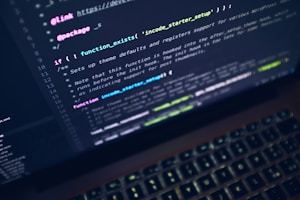Introduction
PHP is a server-side scripting language that is used to build dynamic websites. It is widely used and has a large developer community, making it a popular choice for web development.
Hello world
Let's start by writing a simple "Hello World" program in PHP.
Save the above code in a file with the ".php" extension, for example, "hello.php". When you run this file on a PHP-enabled server, you will see the output Hello, World! displayed in your browser.
Variables
In PHP, variables are used to store values that can be accessed and manipulated throughout the program. Variables start with a dollar sign ($) followed by the variable name.
The above code declares two variables, $name and $age, and assigns the values "John" and 25 to them respectively. The echo statement is used to display the values of these variables in a string.
Arrays
Arrays are used to store multiple values in a single variable. They can be indexed or associative.
"John", "age" => 25, "grade" => "A");
echo $fruits[0]; // Output: "apple"
echo $student["name"]; // Output: "John"
?>The code above declares two arrays, $fruits and $student. The $fruits array is indexed, meaning the elements are accessed by their numeric index starting from 0. The $student array is associative, meaning the elements are accessed by their keys ("name", "age", "grade").
Conditionals
PHP provides several conditional statements to control the flow of the program based on certain conditions. The most commonly used conditional statements are if, else, and switch.
= 90) {
echo "Excellent!";
} elseif ($grade >= 80) {
echo "Good!";
} elseif ($grade >= 70) {
echo "Average.";
} else {
echo "Needs improvement.";
}
?>The above code checks the value of the $grade variable using an if statement and prints different messages depending on the grade range.
Loops
Loops are used to execute a block of code repeatedly based on a certain condition. The most commonly used loops in PHP are for, while, and foreach.
The above code uses a for loop to print the numbers from 1 to 5.
Functions
Functions are blocks of code that perform a specific task. They allow you to modularize your code and reuse it throughout your program.
The above code defines a function called add that takes two parameters, $num1 and $num2, and returns their sum. The function is then called with the values 2 and 3, and the result is stored in the variable $result, which is subsequently printed.
Conclusion
In this tutorial, we covered some basic concepts of PHP, including printing output, using variables, working with arrays, using conditionals and loops, and creating functions. PHP has many more features and capabilities that you can explore to develop dynamic websites.

